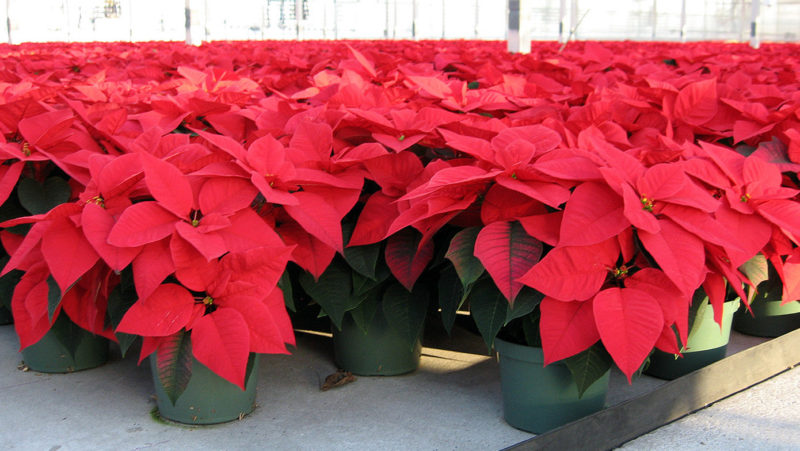
Mind Those Mites: Scouting and Control Tips for Poinsettia
Most growers would agree that summer conditions favor spider mites. Warm temperatures shorten life cycles, causing explosive mite populations. As weather shifts from hot and dry to cooler conditions with longer nights during poinsettia season, mite pressure is reduced.
EARLY DETECTION
Lewis mites and, occasionally, spider mites can be problematic for
poinsettias. Growers are often challenged to tell the difference between the two species. Both prefer to feed on the undersides of leaves, laying eggs closest to the midrib. Both mites will produce webbing, though Lewis mites only do this when the infestation is heavy.
Mites won’t be found on sticky cards, so scouting for early detection of eggs or mites is especially crucial. Concentrate scouting in areas of the greenhouse where air movement is highest. This is where you’ll find the lower humidity that mites prefer.
Mature foliage may begin to reveal symptoms that mimic nutritional deficiencies. Observe foliage for faint light green to yellow speckling. Mites can be easily identified with the use of a hand lens while examining the undersides of leaves. A useful tool is the beating tray to tap foliage for mite presence. Against white paper, mites may appear like moving speckles of black pepper. The chart on page 28 provides key characteristics of both mite species.
TAKING CONTROL
Unless growers are certain which mite is present, we recommend miticides that control both species, making two applications one week apart.
CapSil is a high-quality surfactant that improves spray coverage. During poinsettia bract formation, CapSil rates are reduced to 4 ounces per 100 gallons. To ensure plant safety, limit CapSil applications to a maximum of one per week.
Pesticide information in this article is believed to be correct at the time of publication, but it’s the responsibility of the applicator to always read and follow all label directions. Labels do change without notice. Pesticides other than those listed in the table above may also be safe, legal and effective.


 Video Library
Video Library 




















